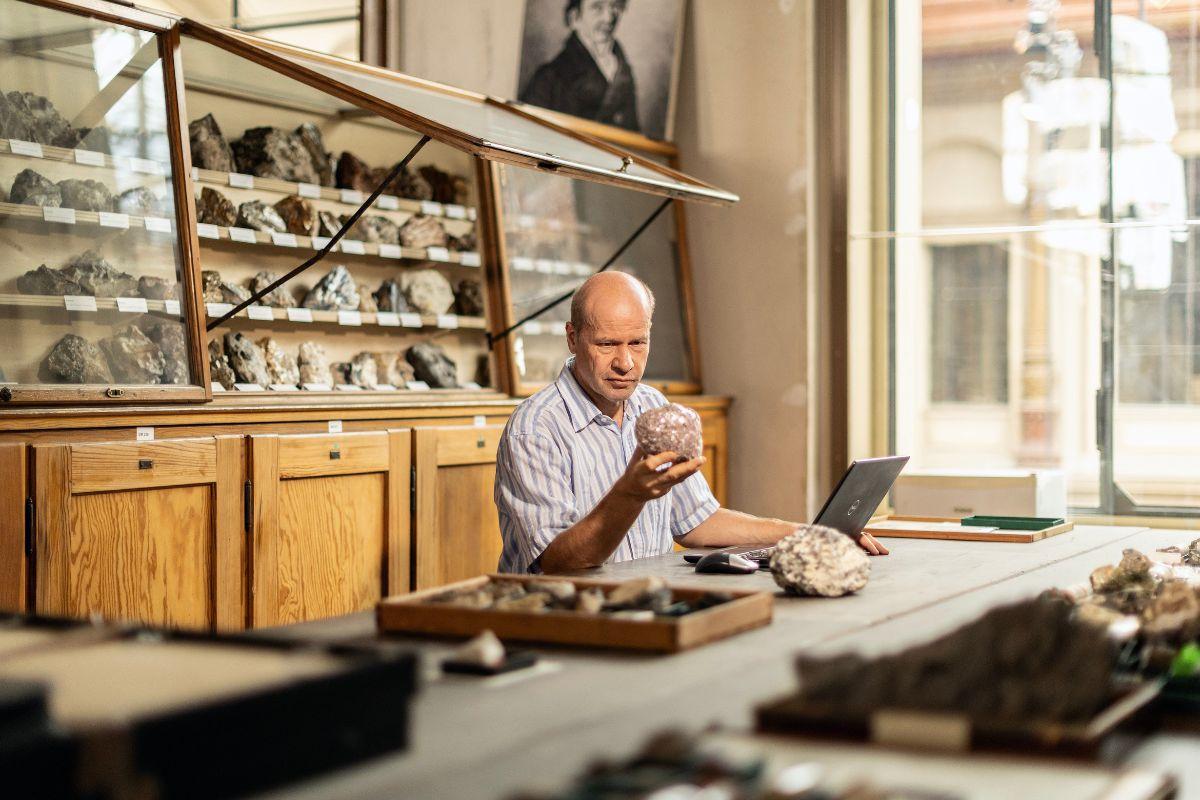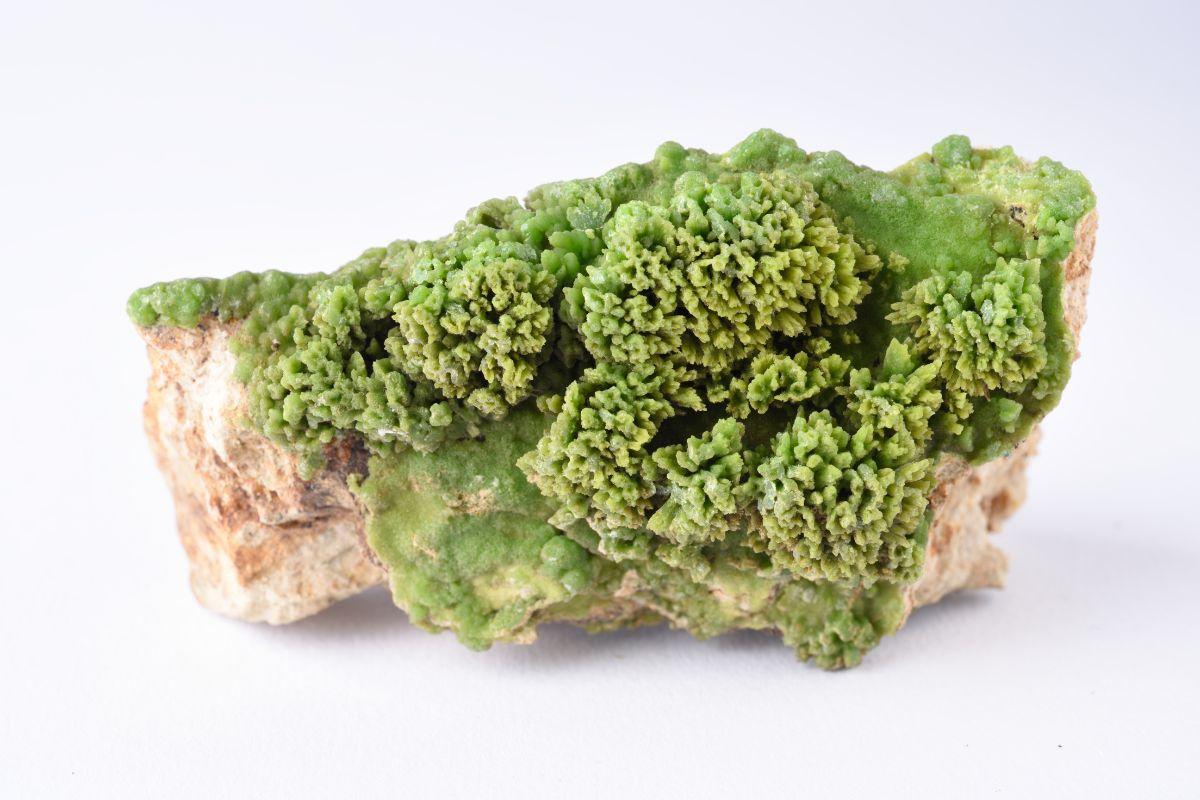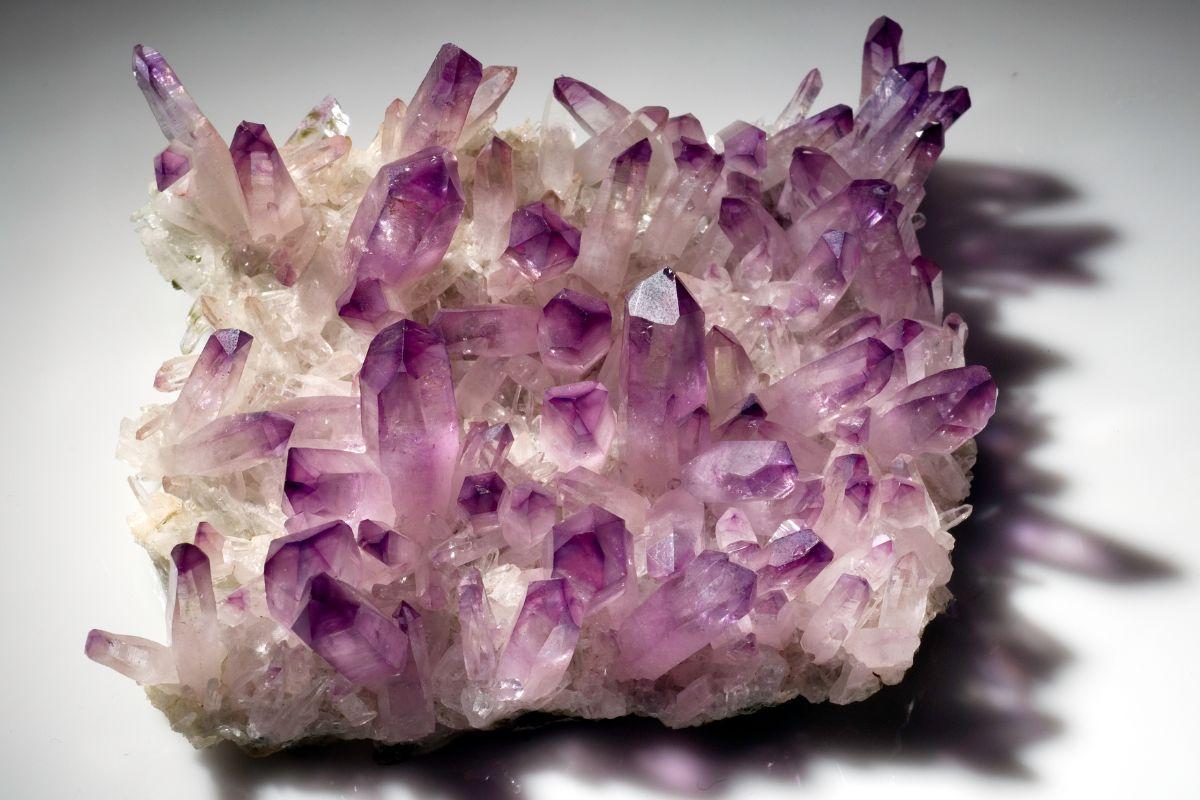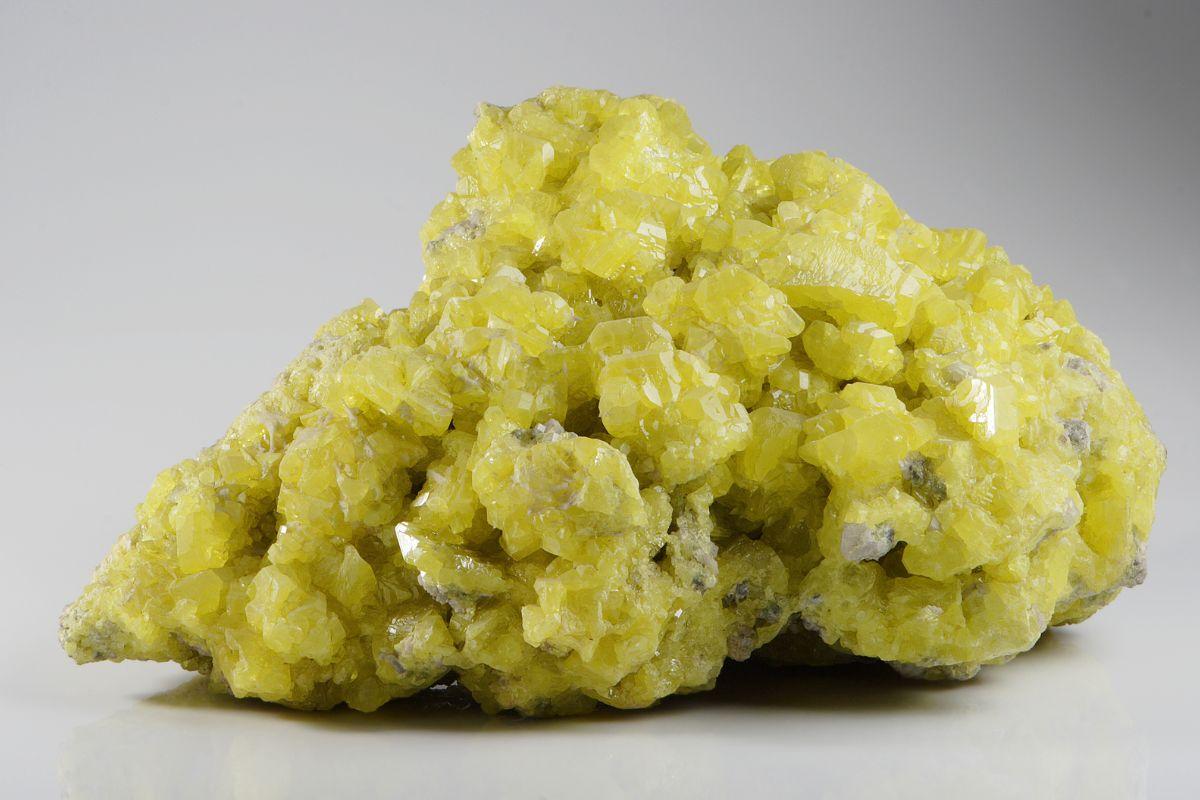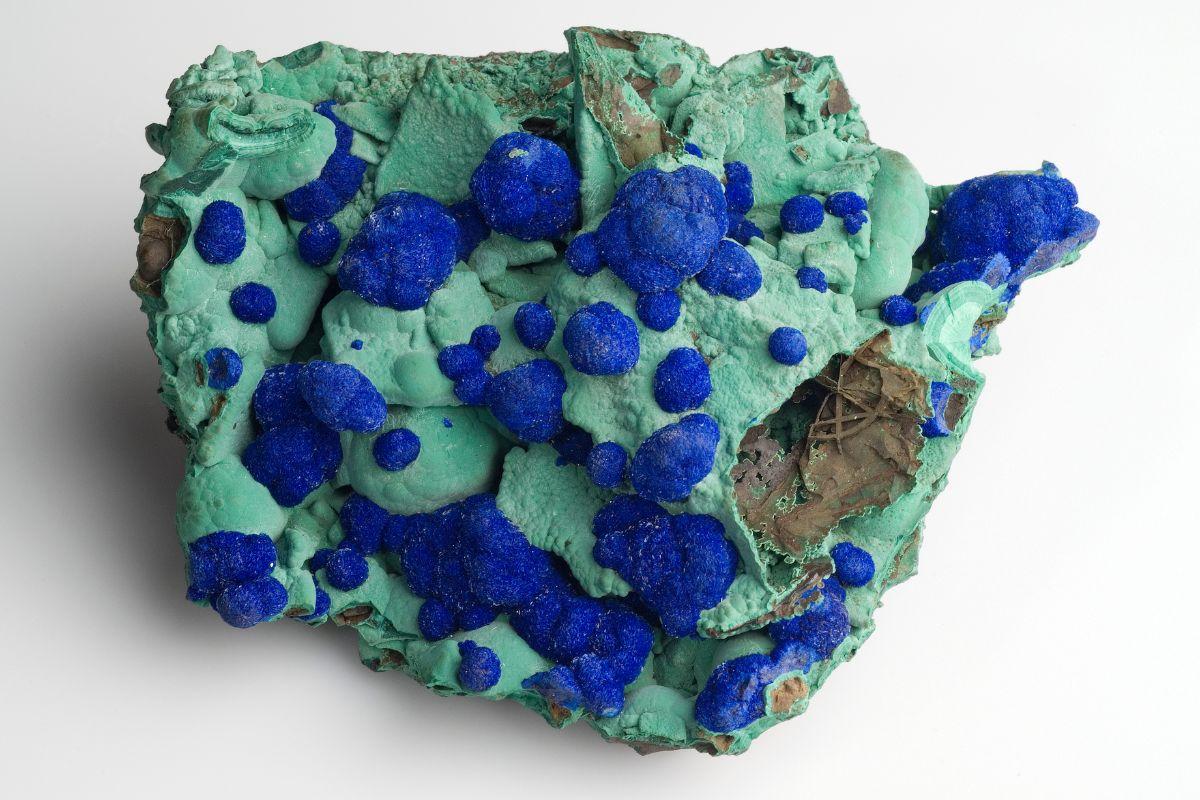Those who believe they have nothing to do with minerals are greatly mistaken. The breakfast was on the porcelain plate – made from quartz, kaolinite, and feldspar. The fingernails are painted and shimmer thanks to the mica minerals muscovite and lepidolite contained in the polish. And then, the grab for the smartphone – which minerals are necessary for its production is explained in this magazine on page 16 (in German). All these minerals are also present in the mineral and rock collection of the Museum für Naturkunde Berlin.
It was founded in 1781 by the Prussian King Frederick II as the Royal Mineral Cabinet and currently includes about 280,000 objects. "We are an important archive and document deposits in our collection, such as mines that are now flooded and no longer accessible," explains the scientific director of the collection, Ralf Thomas Schmitt. "From these mines, we can provide sample material that offers important information to understand how deposits are formed and to find new deposits."
Due to the increasing number of requests, access to the collection had to be improved. Already in 1995, a database was set up, and a strategy for data entry was implemented: The data that were particularly important or frequently requested were entered first. "Our most important task is to provide collection data and samples to scientists for research projects, such as the current project on Heinrich Martin Klaproth, who discovered uranium in Berlin in 1789. The original piece of uranium ore is in our collection," says Schmitt.
However, there are many problems with the database entry: Historical labels are often difficult or even impossible to transcribe, some locations have different names today due to territorial changes than at the time of discovery, and the origin of far-flung collection objects can sometimes be difficult to determine, as well as their precise mineralogical classification. Also, no systematic entry catalogs were kept until the end of the 20th century. Therefore, the original labels of the objects are still the most important carriers of information today. Currently, about 94 percent of the mineral collection, about 85 percent of the petrographic and ore deposit collection, and 100 percent of the meteorite collection are recorded in collection databases.
For the energy transition, more mineral raw materials will be needed in the future, which must be mined. Therefore, mineralogy will continue to be an exciting field of research. "An important goal for the future is to link all available data to each individual collection object. This task is time-consuming, but it will significantly increase the scientific value of the collection," says Schmitt with enthusiasm.
